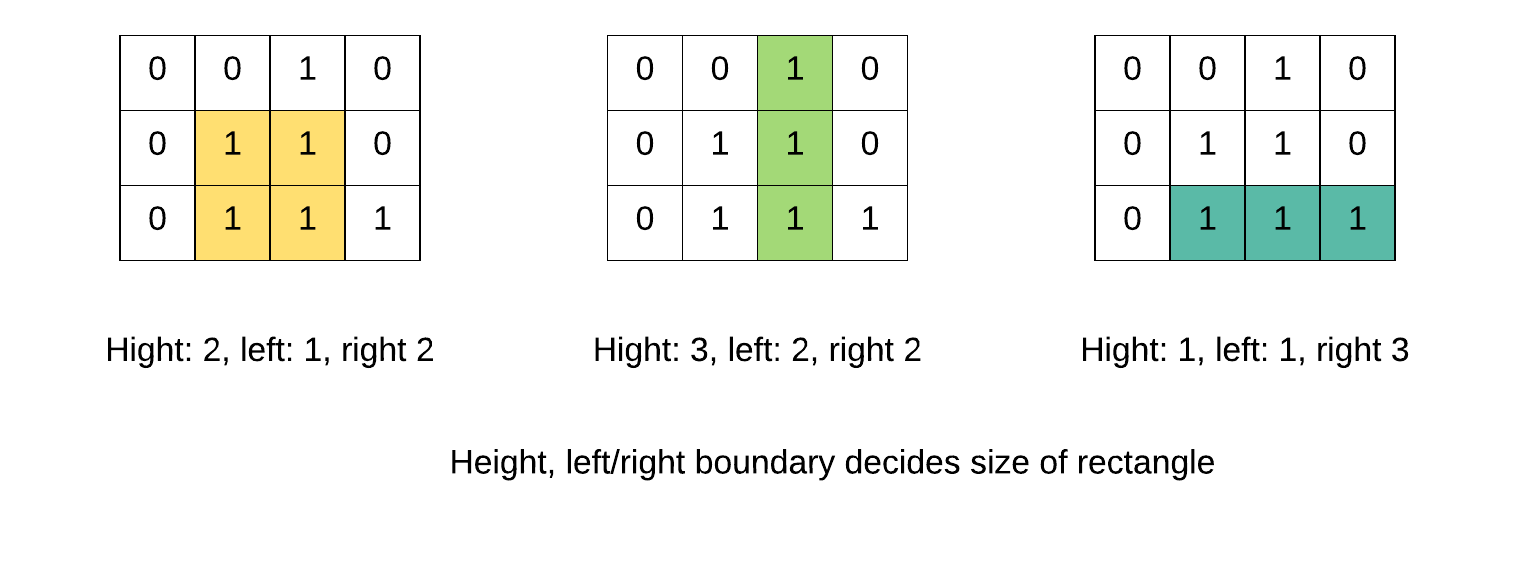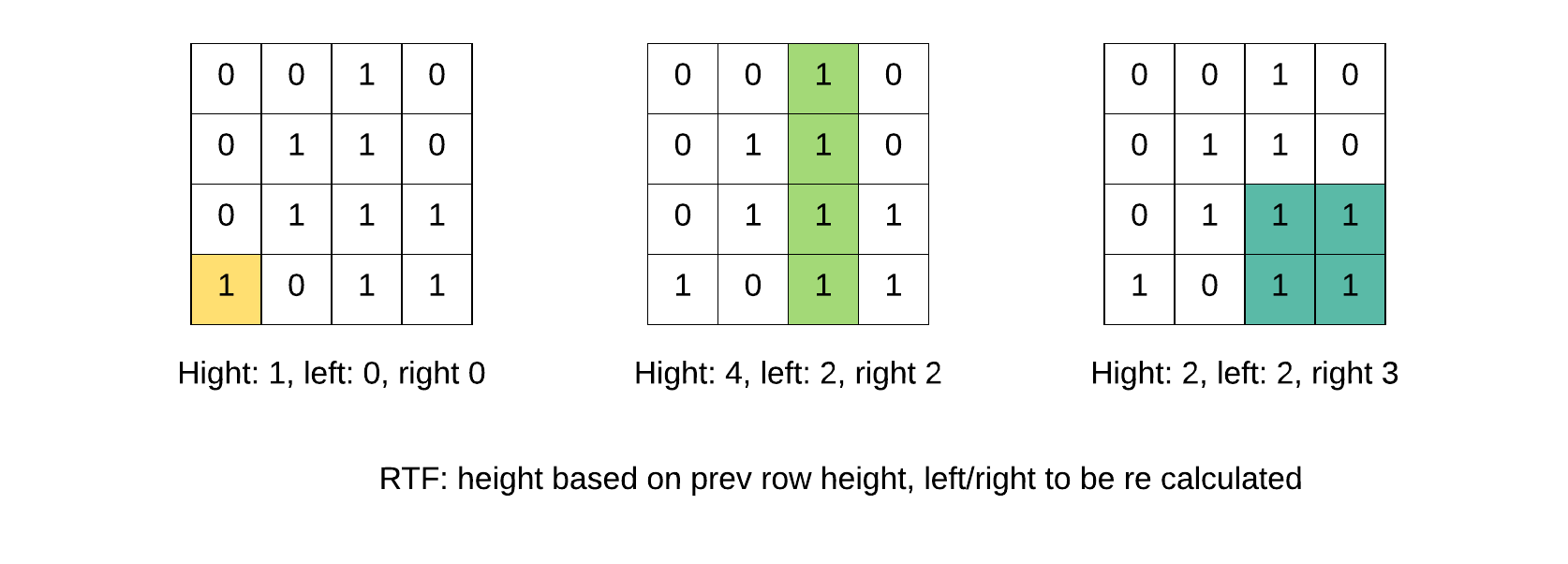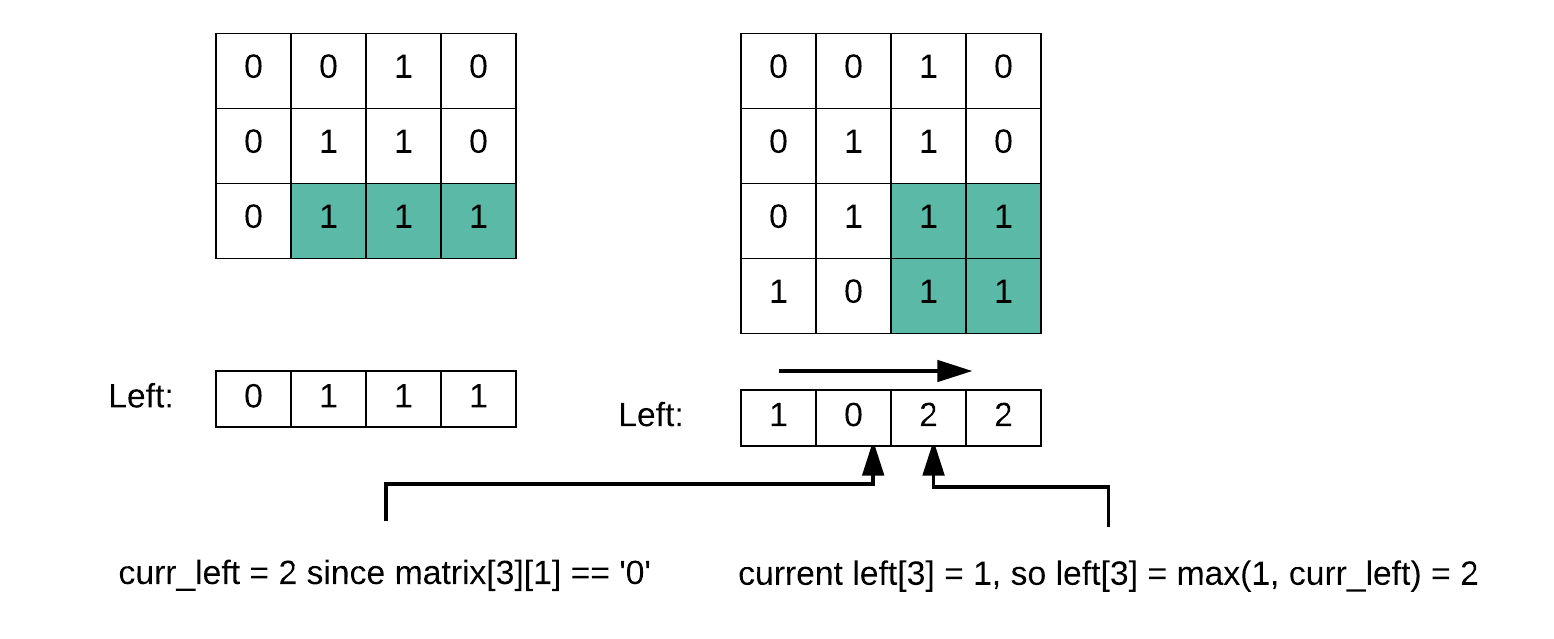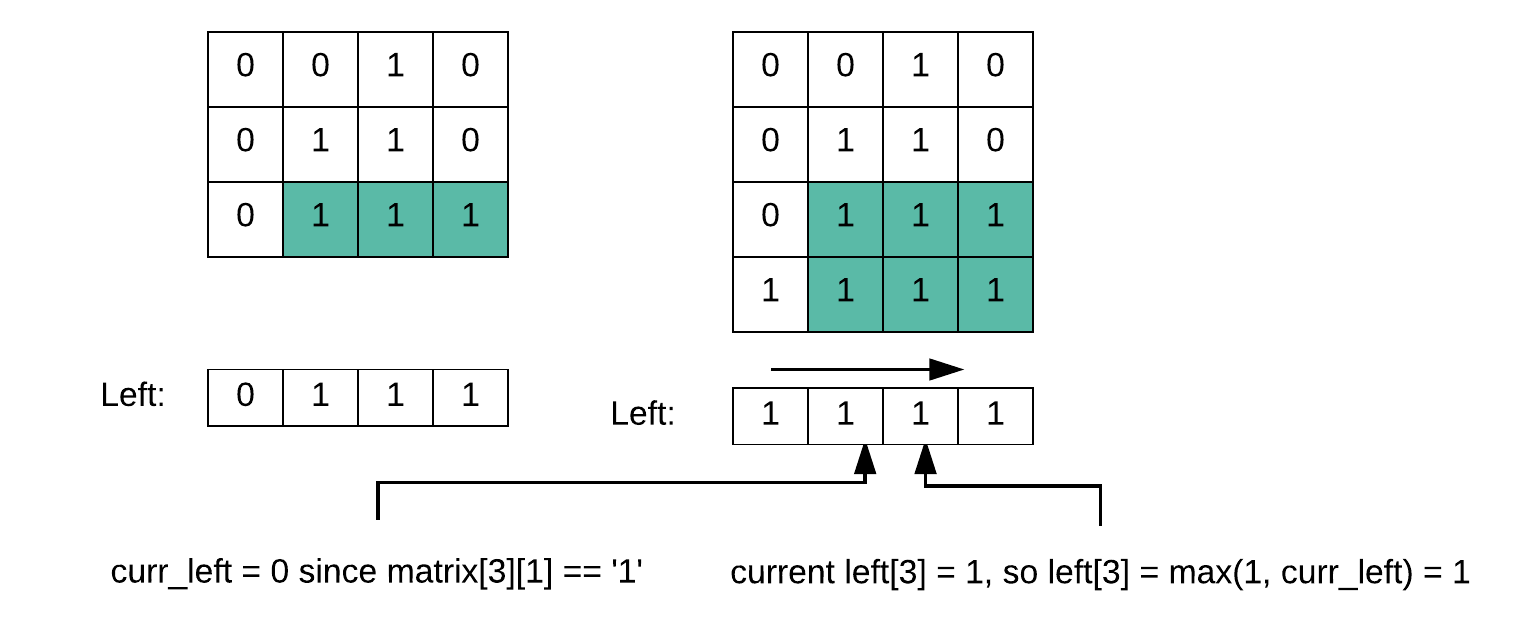Maximal Rectangle problem
Given a 2D binary matrix filled with 0’s and 1’s, find the largest rectangle containing only 1’s and return its area.
For example, given the following matrix:
1 0 1 0 0
1 0 1 1 1
1 1 1 1 1
1 0 0 1 0Return 6.
Height, left boundary and right boundary
A rectangle within a matrix can be decided by three dimensions:
- Height of the rectangle: counts the number of successive ‘1’s above (plus the current one)
- left/right boundary: the boundaries of the rectangle which contains the current point with a height of value height
If you look at the following square, you will find that we can find three different square:

- rectangle 1: height 2, left boundary index 1, right boundary index 2
- rectangle 2: height 3, left boundary index 2, right boundary index 2
- rectangle 3: height 1, left boundary index 1, right boundary index 3
Correctness
The question is:
How does this algorithm guarantees find maximal rectangle ending at bottom row.
If we only take a look at the example, it is based on the following truth:
- Rectangle 1 is the largest rectangle with height of 2
- Rectangle 2 is the largest rectangle with height of 3
- rectangle 3 is the largest rectangle with height of 1
Then the rectangle with the largest area must be in one of them.
Reduction Transition Function
The next question is:
what will happen if we add another row?
In the following diagram, one more row is added.

Three new square if formed when this new row added, the height/left boundary/right boundary have to be recalculated.
Height RTF:
- height[i][j] = matrix[i][j] == ‘1’ ? height[i – 1][j] + 1 : 0
Left boundary RTF:
- currleft = matrix[i][j] == ‘1’ ? currleft : j + 1
- left[i][j] = matrix[i][j] == ‘1’ ? max(left[i – 1][j], curr_left) : 0
The following diagram illustrate how this transition works:

- curr_left = 0
- matrix[3][1] = ‘0’ => curr_left = j + 1 = 2
- matrix[3][2] = ‘1’ => left[1] = max(left[3], curr_left) = 2
We need to update curr_left because when previous cell is ‘0’, previous column could not be counted, hast to restart.
Let’s change matrix[3][1] to ‘1’:

- curr_left = 0
- matrix[3][1] = ‘1’, left[2] = max(0, left[2]) = 1
- matrix[3][2] = ‘1’, left[3] = max(1, left[3]) = 1
When previous cell is ‘1’, previous column could sill be counted, no need to restart.
Right boundary RTF:
- currright = matrix[i][j] == ‘1’ ? currright : j
- right[i][j] = matrix[i][j] == ‘1’ ? min(right[i – 1][j], curr_right) : n;
This is the same as we construct left boundary.
Implementation
We can use a rolling array to replace the matrix. The following is the implementation of the matrix.
public int maximalRectangle(char[][] matrix) {
if (matrix == null || matrix.length == 0 || matrix[0].length == 0) {
return 0;
}
int nrow = matrix.length;
int ncol = matrix[0].length;
int[] height = new int[ncol];
int[] left = new int[ncol];
int[] right = new int[ncol];
Arrays.fill(right, ncol);
int maxArea = 0;
for (int i = 0; i < nrow; i++) {
int currLeft = 0, currRight = ncol;
// calculate height
for (int j = 0; j < ncol; j++) {
height[j] = matrix[i][j] == '1' ? height[j] + 1 : 0;
}
// calculate left boundary: left to right
for (int j = 0; j = 0; j--) {
if (matrix[i][j] == '1') {
right[j] = Math.min(right[j], currRight);
} else {
right[j] = ncol;
currRight = j;
}
}
// calculate max area: right bounday does not include valid column
for (int j = 0; j < ncol; j++) {
maxArea = Math.max((right[j] - left[j]) * height[j], maxArea);
}
}
return maxArea;
}
Trackbacks/Pingbacks